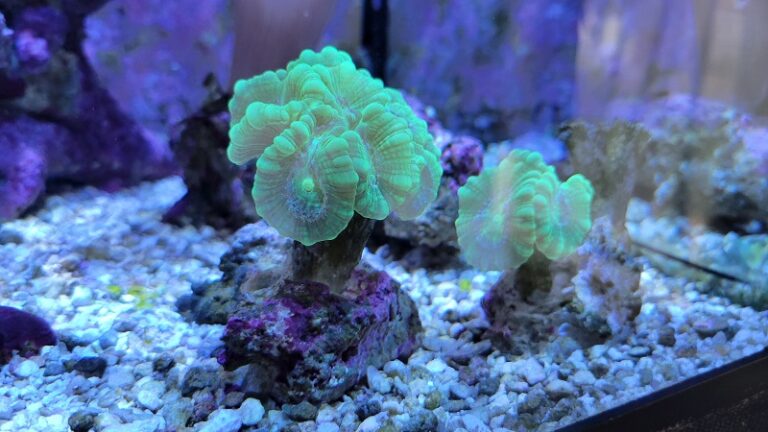
Q: What is a Candy Cane Coral?
A: Candy Cane Coral (Caulastrea sp.) is a type of stony coral known for its distinctive candy cane-like appearance. It features long, tubular polyps with alternating bands of contrasting colors, typically red and white or green and white.
Q: How do I care for Candy Cane Coral?
A: Candy Cane Coral requires moderate to high lighting and moderate water flow in your aquarium. It prefers stable water parameters, including a temperature range of 74-80°F (23-27°C), salinity of 1.024-1.026, and pH of 8.1-8.4. It can benefit from regular feeding with small meaty foods, such as brine shrimp or mysis shrimp.
Q: Can I keep Candy Cane Coral with other corals and fish?
A: Candy Cane Coral is generally considered compatible with other peaceful coral species and reef-safe fish. However, it’s important to provide adequate space between corals to prevent aggression and stinging. Be cautious when placing it near other corals with aggressive tendencies, as it may be vulnerable to damage.
Q: How do I propagate Candy Cane Coral?
A: Candy Cane Coral can be propagated through a process called fragmentation. Using a sharp tool, carefully cut a piece of the coral skeleton, ensuring that each fragment has at least one polyp. Place the fragments in an area with moderate water flow and provide proper lighting and water parameters. Over time, the fragments will grow into new colonies.
Q: Are there any special considerations for Candy Cane Coral?
A: Candy Cane Coral can occasionally release sweeper tentacles, which can harm nearby corals. It’s advisable to provide ample space between it and other corals to prevent damage. Additionally, ensure stable water quality and maintain appropriate calcium, alkalinity, and magnesium levels to support its growth and overall health.
Please note that specific care requirements may vary depending on the exact species of Candy Cane Coral you have, so it’s always recommended to research and consult reliable sources for detailed care guidelines.
